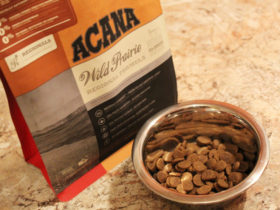In modern construction, plastic formwork often began to be used. It allows the most simple way to create all kinds of constructions. How reliable it is and whether it is worth using it in private construction? We will talk about this and much more below.
Plastic, wooden, metal formwork — for which it is used?
Installation of wall formwork — video
No modern construction is dispensed with formwork today. It is used to create a foundation, ceilings, walls, columns, garden paths (paving slabs) and others. In fact, it gives the shape of any structure. The strength of the structure depends on its quality and reliability. In general, they distinguish: wooden, metal, concrete, plastic, reinforced concrete formwork. The most durable metallic. The fastest in the assembly are plastic. But, one way or another, a concrete composition or reinforcement is poured into each of them.
Also, the formwork is non -removable and removable. The first when hardening the mixture is part of the structure (not removed). The second is removed immediately as concrete dries. The form is highlighted: round, square, oval. For example, it is round formwork that is often used to create columns of many temples. But with the structure of the walls and the foundation rectangular. You can make the formwork with your own hands or rent. But if a non -removable formwork is supposed, it is better to buy it in a construction store. Such a service is also provided by many department stores.
Plastic formwork of columns, walls, foundation — what are its advantages?
The use of plastic formwork EPIC ECO in the construction of the walls of the basement — video
Every year, a plastic formwork for the foundation, walls and ceilings is increasingly used. This is due to the fact that it is a fairly universal material. It folds easily and quickly and provides reliable and durable constructions. Among other advantages, they distinguish:
Simplicity of installation. The design has special holes and sides that help to install, because the process is much faster. And the ease of material (one panel can weigh about 10 kilograms) allows installation with your own hand, without the help of installers.
Provides concrete strength. Basically, this property is created because the plastic fixed formwork does not absorb moisture (it is precisely it is necessary for the hardening of concrete products).
Reusable use. The design has a modular structure. This makes it possible to embed in the system of modules of the size that you need. In addition, this formwork can be used many times. Like a designer it is easy to assemble and also just disassemble it.
Economic use. During the use of formwork, a minimum amount of lubricant mixture for the walls is required. There is also no need to use a special lifting crane.
Universality. The plastic structure allows you to realize almost any design projects. It is used both for horizontal floors and for vertical walls.
Unpretentiousness during operation. The panels are easily cleaned with ordinary water without adding any cleaning substances (cement does not stick to the plastic surface). Also, this formwork is not subject to corrosion and can easily be stored even in wet rooms.
Accessibility. Has this formwork low cost and is available to almost every consumer.
The tightness of the joints of the structure. This is an important point when filling the formwork with a mixture. All walls are perfectly smooth and even.
The only minus that can be distinguished in this formwork is not so high strength. For example, in the metal formwork, the panels have greater stiffness.
Plastic formwork — how to work with it?
Plastic formwork of walls, foundation will be carried out quickly enough if all the conditions and requirements prescribed in the instructions are observed. In the event that the rules are not observed, then the panels are not only not mounted quickly, but will also be short -lived. Therefore, first of all, study the instructions. It has a detailed drawing and diagram (when and how to fix the panels). In fact, this method is comparable to the assembly of a children’s designer, where all parts are laid out and alternately installed.
Very often, manufacturing companies along with the product offer its installation services. But, believe me, even without special skills, you can collect it yourself. Modules are connected using special holes and sides, as well as metal mounts. After the formwork is completely collected, concrete is poured into it, which is tightened for about 26-29 days. The exact time of hardening of the concrete mixture is determined depending on the climatic conditions (in particular temperature). In rainy weather, work will take place slowly, in the sunny on the contrary. The temperature above 20 s is considered optimal.
Attention! In the first 7 days, the structure cannot be disassembled under any circumstances, as this will lead to a violation of the integrity of the structure.













Оставить коммент.